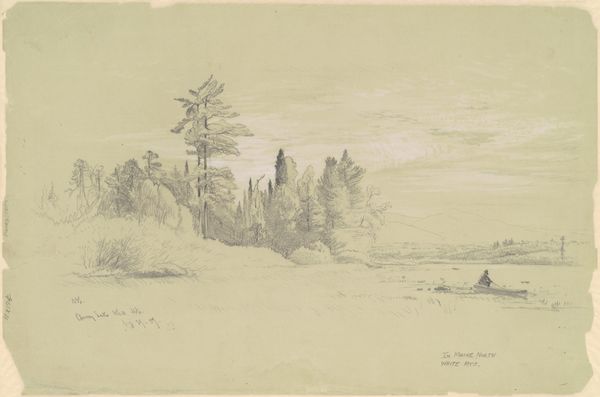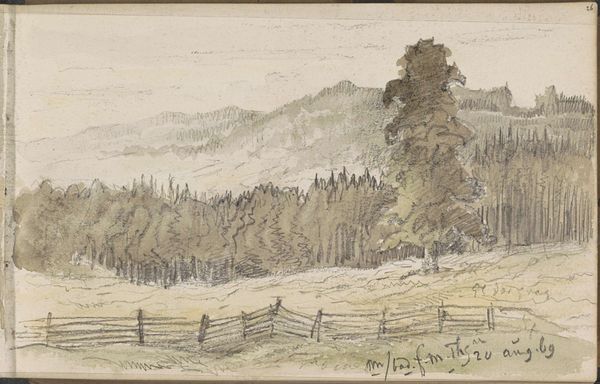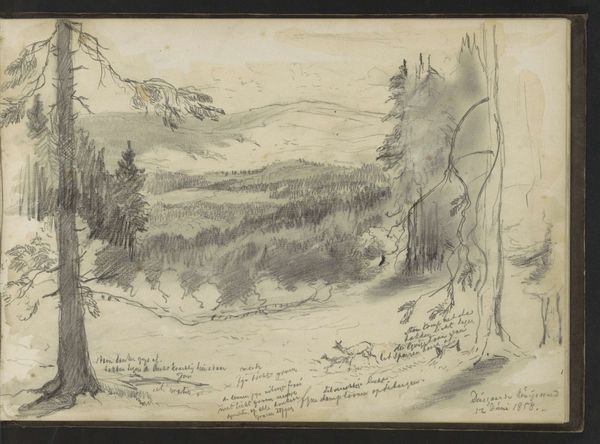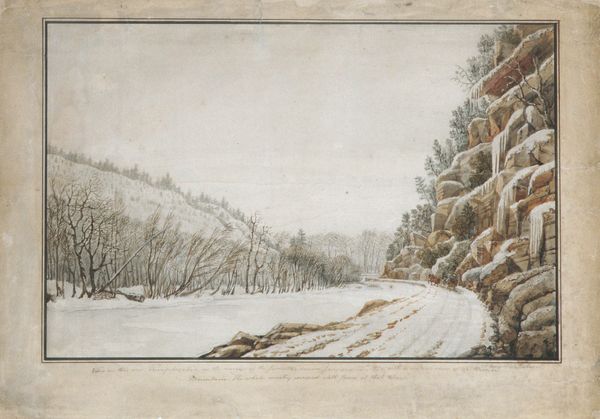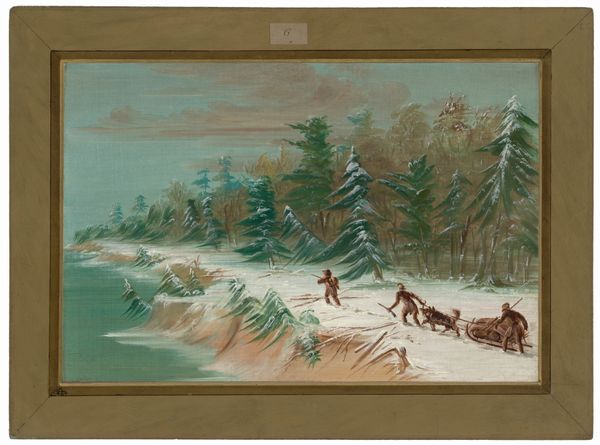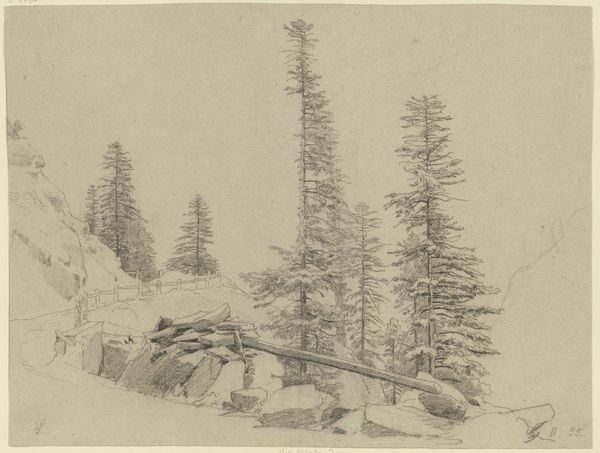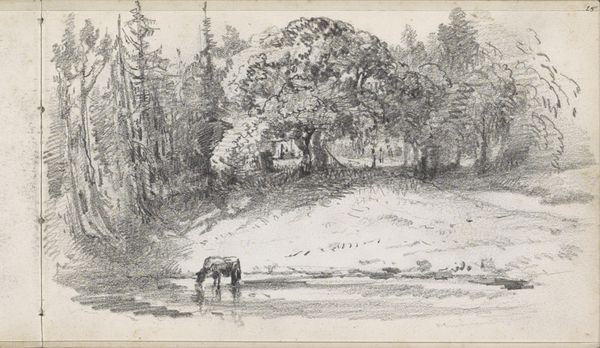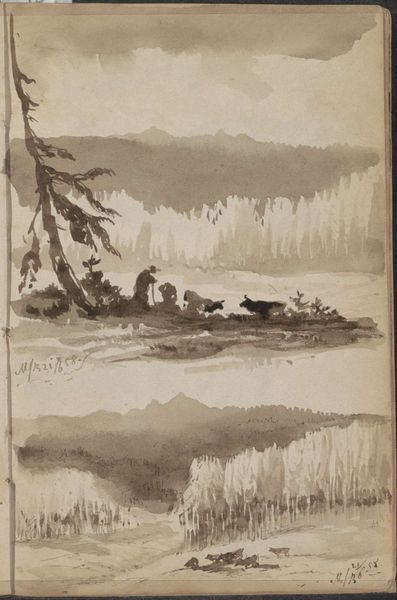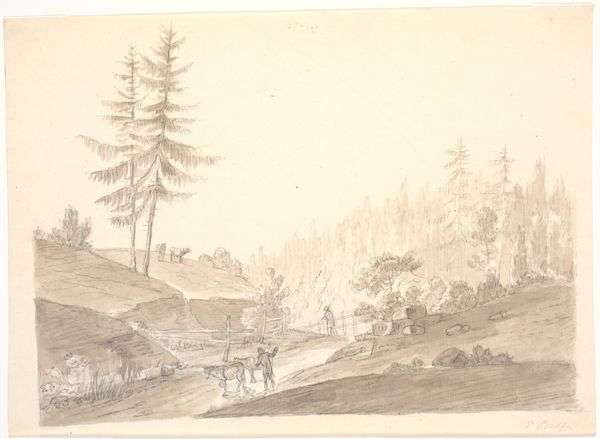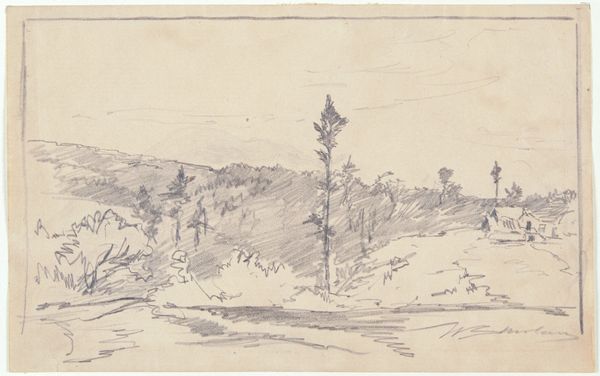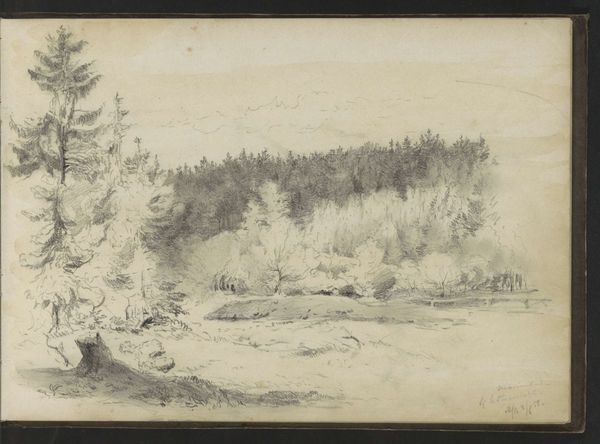
Copyright: Rijks Museum: Open Domain
Johannes Tavenraat made this landscape with deer in Bohemia using pen in grey ink, brush in grey and brown, and pencil. This scene encapsulates the Romantic fascination with nature that pervaded European art in the 19th century. The work’s cultural significance lies in its depiction of the Bohemian landscape, now part of the Czech Republic. Consider how the geographical features—mountains, forests, and wildlife—contribute to the image's meaning. During this time, Bohemia was part of the Austrian Empire, a region known for its rich natural resources and hunting grounds, often frequented by the aristocracy. This artwork reflects a broader European phenomenon: the rise of landscape painting as a genre. Artists often received commissions from wealthy patrons who sought to display their dominion over land. You can research the social history of landscape painting, hunting practices, and the cultural significance of deer in 19th-century Bohemia to understand the artwork better. Through such research, we can appreciate how this image is deeply embedded in its social and institutional context.
Comments
No comments
Be the first to comment and join the conversation on the ultimate creative platform.

